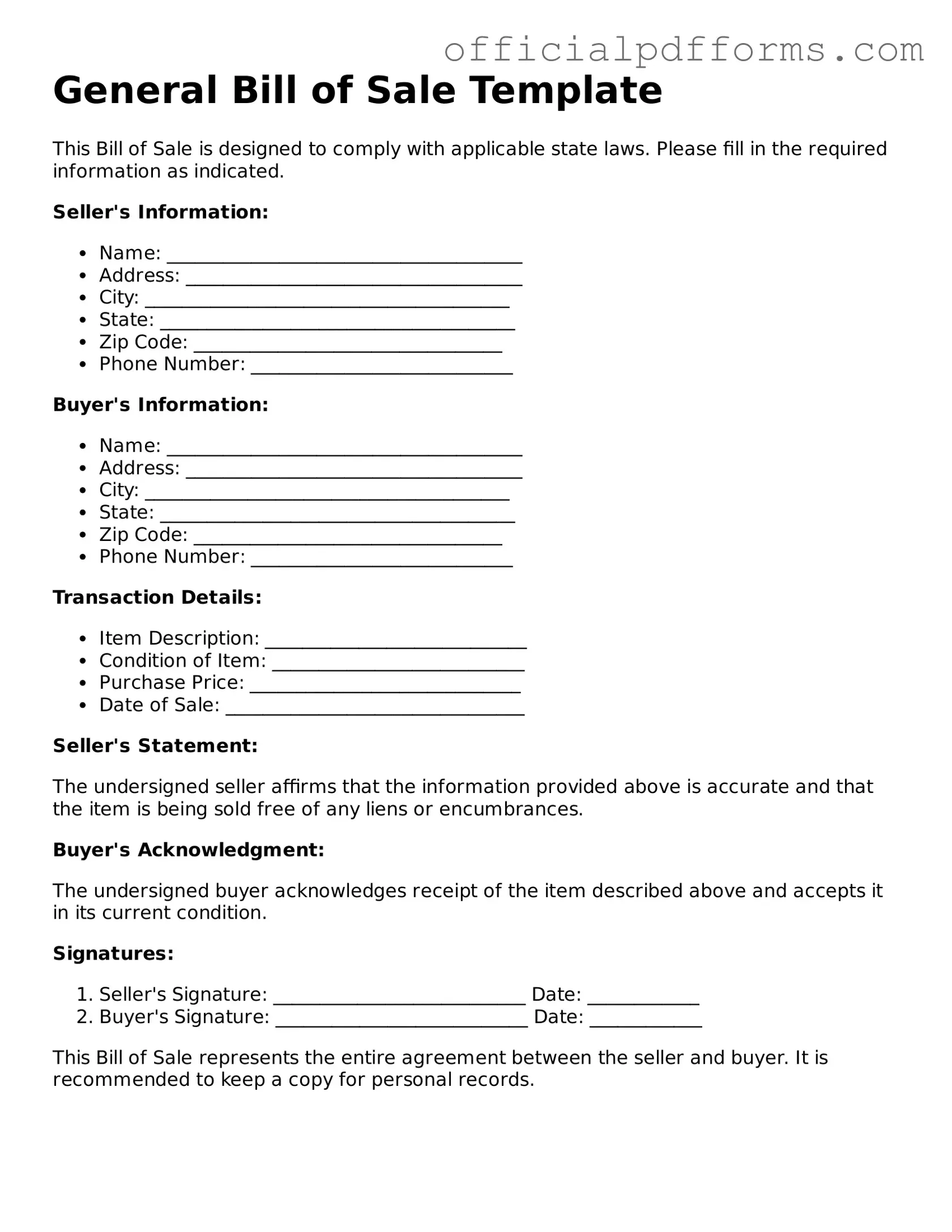What is a Bill of Sale?
A Bill of Sale is a legal document that serves as proof of a transaction between a buyer and a seller. It outlines the details of the sale, including the item being sold, the purchase price, and the date of the transaction. This document is particularly important for high-value items, such as vehicles, real estate, or expensive equipment.
Why do I need a Bill of Sale?
Having a Bill of Sale protects both the buyer and the seller. For the seller, it provides evidence that the item has been transferred and that they are no longer responsible for it. For the buyer, it serves as proof of ownership and can be useful for registration, insurance, or resale purposes. Additionally, it helps to clarify the terms of the sale, reducing the potential for disputes.
A comprehensive Bill of Sale should include the following information:
-
The names and addresses of both the buyer and the seller
-
A description of the item being sold, including any identifying details (like VIN for vehicles)
-
The purchase price
-
The date of the transaction
-
Any warranties or guarantees, if applicable
Including these details helps to ensure clarity and legal validity.
Do I need to have the Bill of Sale notarized?
Notarization is not always required for a Bill of Sale, but it can add an extra layer of authenticity. Some states may require notarization for specific transactions, such as vehicle sales. It’s advisable to check your state’s laws to determine if notarization is necessary for your situation.
Can I create my own Bill of Sale?
Yes, you can create your own Bill of Sale. Many templates are available online, or you can draft one from scratch. Just ensure that it includes all the necessary information and complies with your state’s requirements. Customizing a template to fit your specific transaction can also be beneficial.
Is a Bill of Sale legally binding?
A Bill of Sale is generally considered a legally binding document, provided it meets certain criteria. It must be signed by both parties and include all relevant information. However, the enforceability can vary based on state laws and the nature of the transaction. If you have concerns, consulting a legal professional can provide clarity.
What happens if I lose my Bill of Sale?
If you lose your Bill of Sale, it may be possible to obtain a replacement. This can often be done by contacting the seller and requesting a new copy. If that isn’t feasible, you might need to gather other documentation to prove ownership, such as receipts, photographs, or registration documents, depending on the item.
How does a Bill of Sale differ from a purchase agreement?
A Bill of Sale is a document that confirms the transfer of ownership of an item, while a purchase agreement outlines the terms and conditions of the sale before the transaction occurs. In essence, the Bill of Sale is the final step in the process, whereas the purchase agreement is more about the negotiation and agreement on the sale.
